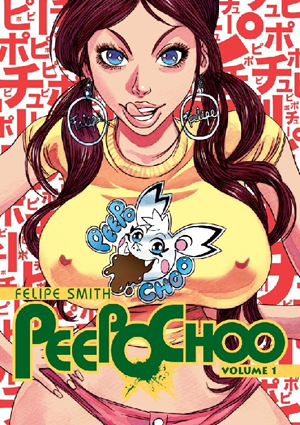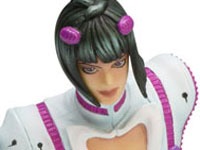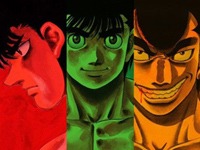 Without any background on its creator, Felipe Smith, being a tad confused by what exactly Peepo Choo is would be understandable. You see, Felipe had the proper mixture of fortune, hard work and guts to be able to produce manga in Japan, where it’s considered, well, “proper manga.” For more on this process, I highly recommend reading Deb Aoki’s extensive interview with the man here. So there, some of you can breathe a sigh of relief because this isn’t OEL, but perhaps you’ll also take a moment to reflect on why anyone thinks that matters. If there’s anything to be learned here, it’s that Peepo Choo is comics.
Without any background on its creator, Felipe Smith, being a tad confused by what exactly Peepo Choo is would be understandable. You see, Felipe had the proper mixture of fortune, hard work and guts to be able to produce manga in Japan, where it’s considered, well, “proper manga.” For more on this process, I highly recommend reading Deb Aoki’s extensive interview with the man here. So there, some of you can breathe a sigh of relief because this isn’t OEL, but perhaps you’ll also take a moment to reflect on why anyone thinks that matters. If there’s anything to be learned here, it’s that Peepo Choo is comics.
More importantly, though, Peepo Choo is a cultural exchange. It’s a thorough smashing of the general otaku’s romanticized vision of Japan. Though it weaves a few narrative threads, the thickest follows Milton, a kid in Chicago who struggles to fit in with his peers. When no one’s looking, or when he’s working at the local comic shop in The Loop, he ditches his faux-street gear for cosplay based on his favorite series, Peepo Choo.
Milton knows all of Peepo Choo’s moves—he contorts and spins and damn near breaks his back to imitate them—as do the rest of the otaku that populate (read: loiter in) the shop. Thus it’s no surprise that a sudden raffle to win a trip to Japan is hotly contested. Milton wants nothing more in life but to win and be whisked away to his dreamland, where everyone cosplays all the time, and they all know the catchphrases of his favorite anime characters. Well, thanks to his enthusiasm and insistence that he knows the language, he may yet find this fulfilled, but there’s a lot more hanging on this trip than a simple act of wish granting.
And so the other threads of the series—which originally ran in Kodansha’s Morning Two and spans three volumes in total—are set to intertwine harshly with Milton’s. Violent yakuza and high-stakes hitmen all loom menacingly, ready to crush that idealized vision of Japan with the clap of a gun and the hissing spray of blood.
While it’s true that Peepo Choo confronts a myriad of nerd misconceptions of Japan, it doesn’t do so cynically. It’s not just some artist spitting in the face of sugar-charged daydreamers, because Felipe is living the dream himself. However, it’s an important distinction to note that this dream wasn’t magically realized overnight, and Japan is not full of people dressed up as Pikachu-like characters squawking catch phrases and lapping up the glowing smiles of gaijin from all over the US. I’d call this out as a no-brainer but the honey-coated whispers ring all too familiar.
Volume one also spends some time humorously dealing with the manga vs. American comics debate. Even with both sides viewed through the eyes of nerd-dissing comic shop employee Jody, I think we can all come to the conclusion that it’s as silly and pointless an argument as ever. Peepo Choo, in its own charming way, seems to want us all to settle on the fact that comics are just that, regardless of their native origin. Yes, Felipe Smith does comics in Japan, but he also does his in a unique style, telling a story that blends large chunks of disparate cultural elements together in a satisfying way.
Felipe’s art is as quick and brutal as the subject matter. His characters have a lot of movement to them, looking as wildly animated as anything on screen. The subjects he splashes on each page are equal parts grotesque, erotic and adorable—from hulking gangsters to comically buxom women and the ear-to-ear grin of Japanese mascots running wild. It’s definitely for “mature” readers, while also offering a lot for your immature side to revel in, as well.
Peepo Choo paints a suitable caricature of fandom without outright mockery; if you can’t see the profound love for the medium on display here you’re not looking hard enough. I’m absolutely anticipating the remaining volumes of this series—a bold and interesting pick from the folks at Vertical—and hopefully other American manga readers will latch on to it in a big way.
Publisher: Vertical Inc.
Story & Art: Felipe Smith
© 2010 by Felipe Smith







